To mark the 300th anniversary of the founding of Gibson’s Regiment in 1694, which became the 28th Foot in 1758 and then, in 1881, The Gloucestershire Regiment, the Regiment held a series of parades throughout Bristol and Gloucestershire over 5 days in March 1994. First, however, there was a rugby match; then, a Regimental Party in a hangar at RAF Quedgeley where nearly two thousand serving and retired members of the Regiment and their families sat down to lunch and then partied. The celebrations culminated in a Service in Gloucester Cathedral, a march through the City, with the streets and… The 1st Battalion arrived in Shackleton Barracks, Ballykelly, in February 1988 after 2 glorious years in the divided allied city of Berlin. A few days after their arrival, the Battalion was deployed with A Company to Auchnacloy on the border, B and Support Companies to Belfast to cover the funerals of the IRA terrorists killed by the SAS in Gibraltar and C Company as Brigade Reserve remaining in Ballykelly covering Londonderry. The Battalion arrived with the new infantry rifle, the SA80, which was the first time it had been seen in this part of Northern Ireland. Companies rotated through… 1st Glosters returned to Berlin in February 1986. Little had changed since May 1969; even Rudolph Hess was still in Spandau Prison. The highlight of the two-year tour was the annual Queen’s Birthday Parade in May 1987, taken by Her Majesty, Queen Elizabeth herself, in the 1936 Olympic Stadium, when the Colours ‘trooped’ were those of the 1st Battalion, The Gloucestershire Regiment. This was the first time the Colours of the Regiment, or its predecessors, had been trooped in front of the reigning Sovereign. Although the 1st Battalion Colours were paraded at Queen Elizabeth’s Coronation in 1953, the only previous… “There was a ripple of applause from the crowd when the 1st Battalion The Gloucestershire Regiment paraded for the last time their Old Colours. These had been presented in the very same park on 26th April, 1952, and since receiving them the Battalion had served in many parts of the world…There were many in Gloucester Park who looked at the Old Colours with particular interest; above all C/Sergeant R.P.Bishop, one of the Colour Escort, the only man actually on parade who had also been on parade nearly a quarter century ago.” Major Leo Capel, The Back Badge June 1976 The… The Gloucestershire Regiment’s posting to Kenya in 1955 was the first of many overseas tours during what was to become the United Kingdom’s withdrawal from Empire. Kenya had been in the turmoil for several years as a result of an insurrection led by the Kikuyu tribe against British rule. The main grievance was the ownership of land. By 1955, the insurrection was already well down the road to defeat, although the Gloucesters would still be involved in patrolling, and operations launched to hunt down and apprehend or kill the remaining insurgents. The Gloucesters formed part of 49th Independent Infantry Brigade… In his 1976 book “The Imjin Roll”, Colonel E.D. Harding computed the Gloucestershire Regiment’s losses in prisoners after the battle of the Imjin to have been 522. Fewer than fifty men from the forward Companies had broken through the Chinese forces which had encircled the battalion. When Major Grist reported the state of the battalion on 27th April, only 217 men were present, the majority of whom had been with the rear echelons during the battle. With replacements from the U.K. the Glosters were slowly brought up to strength and by July 1951 were fully operational again. 29th Brigade Group… On 1st October 1950, 890 officers and men of 1st Battalion, The Gloucestershire Regiment, led by Lieutenant-Colonel J.P. “Fred” Carne, set sail from Southampton bound for Korea. The Glosters formed part of 29th Independent Infantry Brigade Group, with 1st Royal Northumberland Fusiliers, 1st Royal Ulster Rifles, 8th King’s Royal Irish Hussars, C squadron 7th Royal Tank Regiment, 45th Field Regiment Royal Artillery, 11th Light Anti-Aircraft Battery Royal Artillery and 170th Mortar Battery Royal Artillery, together with supporting arms and services. The formation was under the command of Brigadier Tom Brodie, and the men were a mixture of Regular soldiers, Reservists… 1st Battalion, The Gloucestershire Regiment returned to England from India in 1947 and, reduced to cadre strength, was put into a state of “suspended animation”. The Gloucesters had been the last British regiment to march through the streets of Delhi in the Victory Parade of 7th March 1946, prior to the independence the following year of India and Pakistan. 2nd Battalion had returned from Germany in October 1946, but within a few months were again overseas, stationed in Bermuda and Jamaica. The pre-war and wartime Territorial and Service battalions had all been disbanded or still existed in other guises, except… Unlike its sister 2nd Battalion, 1st Royal Gloucestershire Hussars had not seen service overseas during the Second World War, but had been used for home defence and as an armoured training regiment. With the end of the war in Europe they began training for the war against Japan but, to their disappointment, their services were not required after the dropping of the atomic bombs. 2nd Lieutenant George Brown had joined the regiment in the summer of 1945 at Bury St Edmunds:- “The regiment was equipped with Churchill tanks, many of them with flamethrowers fixed at the front of the tank,… 36th Division with its two British Brigades, the 29th and the 72nd, renewed their advance south towards Mandalay on the left bank of the Irrawaddy in January 1945, after a short delay imposed by unseasonal monsoon conditions. Their first target was Mongmit, almost a hundred miles away. 10th Battalion, The Gloucestershire Regiment was, as ever, with 72nd Brigade and advancing through the teak forests of the Shan, becoming engaged in a series of short, sharp fights with the Japanese around Mabein. 36th Division was now reinforced with the addition of the newly arrived troops of 26th Indian Brigade, and was… As the war in Europe entered its final phase, both 2nd Battalion, The Gloucestershire Regiment and 43rd Reconnaissance Regiment (ex 5th Gloucesters) stood poised to complete the liberation of the Netherlands and to invade Germany. In the Far East, 10th Battalion were fighting in Burma and 1st Battalion were on internal security duties in Italy. 44th Royal Tank Regiment (ex 6th Gloucesters) were at Zomeren in the Netherlands, and 50th Royal Tank Regiment (also ex 6th Gloucesters) were in Greece, recently arrived from the Italian Front. 66th Searchlight Regiment (ex 4th Gloucesters) were in Essex, helping to defend London against… After 2nd Battalion and 5th Battalion of the Gloucestershire Regiment returned to England from France in 1940 they were brought up to strength, retrained and re-equipped for the invasion of Nazi-occupied Europe in 1944. 2nd Battalion remained an infantry Battalion but 5th Battalion was converted to 43rd Reconnaissance Regiment which, equipped with armoured cars would act as the eyes and ears of 43rd (Wessex) Division in 1944-45. 2nd Battalion came ashore at Gold Beach on 6th June, D-Day, as part of 56th Brigade, which was the first allied formation to enter Bayeux the following day. During the build-up of the… In February 1944 10th Battalion, The Gloucestershire Regiment arrived from India on the Arakan Peninsula in Burma. The battalion had been formed in 1940, and in April 1942 had been converted to 159 Regiment Royal Armoured Corps. The new tank regiment had arrived in India in December 1942 and joined 32nd Indian Armoured Division, but in March 1943, it was converted back to infantry and the 10th Gloucesters were reborn. The battalion was part of 72nd Brigade together with 6th South Wales Borderers and 9th Royal Sussex, and 72nd Brigade came under the command of 36th Division, led by Major… 7th December 1941 found 1st Battalion, The Gloucestershire Regiment based at Rangoon, one of only two British battalions in Burma employed in internal security duties. When the Japanese invaded Burma at the beginning of the 1942 1st Battalion was guarding the approaches to the capital, road, riverine and at Mingaladon airfield. After British defeats at Sittang and Pegu, the road to Rangoon lay open and the decision was made to evacuate the city in February 1942. Under the leadership of Lieutenant-Colonel Charles Bagot, the Gloucesters patrolled the streets, guarding against looting and preparing the demolition of the oil refinery at… 2nd Royal Gloucestershire Hussars arrived in Egypt on 1st October 1941 as one regiment of 22nd Armoured Brigade which was allocated to reinforce 7th Armoured Division, in preparation for General Sir Claude Auchinleck’s planned offensive in November. 7th Armoured Division, whose divisional emblem was the jerboa, or “Desert Rat”, included two other armoured brigades, the 4th and the 7th, as well as an infantry support group. In 1st Army Tank Brigade were 44th Royal Tank Regiment which had been converted into an armoured battalion from 6th Battalion, The Gloucestershire Regiment in 1938. A year later 50th Royal Tank Regiment was… On 2nd October 1939 2nd Battalion, the Gloucestershire Regiment landed in France with the British Expeditionary Force, as part of 3rd Infantry (Iron) Division commanded by Major-General Bernard Law Montgomery. 5th Battalion arrived in France on 15th January 1940 with 144th Brigade, 48th (South Midland) Division. 48th Division was a familiar name from the Great War. In February the Territorial divisions were beefed up with regular troops, and thus in February 2nd Battalion was transferred to 145th Brigade, 48th Division. The “Phoney War” or “Sitzkrieg” of late 1939 and early 1940 on the Western Front involved occasional actions in which… The Abyssinian Crisis of 1935 prompted the dispatch of a British force to Egypt in order to protect any possible threat against British interests there. On 7th January 1936 2nd Battalion, The Gloucestershire Regiment left Southampton and arrived at Alexandria nine days later. By the 24th January the battalion, which was due to convert to a Machine Gun Battalion at the end of the year, was at Mersa Matruh near the border with Libya, which was part of Fascist Italy’s North African empire. From the British Army’s point of view this was a period of very tight budgets. Military hardware,… After the end of the Great War, 2nd Battalion, the Gloucestershire Regiment were posted once again to India. On 27th January 1927, the battalion set sail from Bombay to Shanghai as part of 9th (Jhansi) Infantry Brigade), the lead element of an expeditionary force gathering to protect the International Settlement from the ravages of the Chinese Civil War that was threatening the city of Shanghai. For seven weeks the Gloucesters stood by to protect the Settlement to the north of the city walls. The Daily Mail correspondent of the time reported:- “SHANGHAI STIRRED – – – MEN, WOMEN AND CHILDREN… In December 1920 1st Battalion, The Gloucestershire Regiment was sent from England to County Cork in Ireland. Ireland was in the middle of its War of Independence and the Gloucesters’ operations focused upon raids on houses and farmsteads, patrols and convoy protection around Kilworth and Kanturk looking for I.R.A. members and arms caches. The battalion suffered no fatal casualties from rebel activity during their tour of duty, and did score one notable success. Bicycles were found more useful for patrol work than motor vehicles (especially as the bridges on the rural roads were frequently blown up), and the battalion had… At the beginning of 1918, 2nd and 9th Battalions of the Gloucestershire Regiment had already been in Salonika and Macedonia for two years. The Front had been largely static, with the Allied presence serving to support Serbia and threaten Bulgaria. Resources had never been enough for a major offensive to be mounted during this period, and disease was a greater enemy than the Bulgarians. Private Frank Peck of 9th Battalion was at one time posted as a signaller to Army Headquarters in Salonika and got a good view of his Serbian allies. “Sleeping on the quarried floor in H.Q. was… The Bantams of 14th Battalion were disbanded on 11th February 1918, and the survivors, some 250 strong, were transferred to 13th Battalion. On 20th February, 2/4th and 2/6th Battalions were also disbanded, their surviving personnel transferring to 2/5th Battalion, The Gloucestershire Regiment and 24th Entrenching Battalion. 10th Battalion had already been disbanded in February 1917, its survivors transferring to 1st and 8th Battalions, and 13th Entrenching Battalion. On 21st March 1918 the German Spring Offensive, or ‘Kaiserschlacht’, began with Operation Michael on the Western Front. British Third and Fifth Armies’ fronts were penetrated at several points. The following day 39th… In March 1917 the Gloucesters still had twelve battalions on the Western Front, several of which, in various Divisions, were to be involved in the fighting that took place during the cautious pursuit of the German Army as it withdrew back towards the heavily fortified Hindenburg Line. 61st Division (mockingly referred to as the “Sixty-Worst” by some) included 2/4th, 2/5th and 2/6th Gloucesters. Second-Lieutenant W.G. Shipway enlisted as a private soldier with 4th Battalion in 1914, and after his commission in 1916 was posted to 2/4th Battalion, as he explained in his memoir: “I was posted to the 2/4th Battalion… By the summer of 1916 twelve battalions of the Gloucestershire Regiment were on the Western Front. 1st and 10th Battalions in 1st Division; 1/4th, 1/5th and 1/6th in 48th (1/South Midland) Division; 2/4th, 2/5th and 2/6th in 61st (2/South Midland) Division; 8th Battalion in 19th Division; 12th Battalion in 5th Division; 13th Battalion in 39th Division; and 14th Battalion in 35th Division. The Gloucesters were fortunate to not have been in action on the first day of the battle of the Somme, when the British Army lost over 19,000 men killed and another 40,000 wounded. But the battle was to… On 22nd November 1915 the Royal Gloucestershire Hussars left Gallipoli and sailed back to Egypt. The regiment was gradually brought closer to full strength and within a few months the yeomen were again in action, and this time their horses were with them. The British defence of the Suez Canal was centered on the town of Romani, about 30 kilometres to the east, and reconnaissance and aggressive patrolling of Turkish forward positions typified the work of the hussars during the spring of 1916. Lieutenant Algar Howard described one such patrol in his diary entry of 2nd April: “. . …. 7th Battalion, The Gloucestershire Regiment had landed at Basra in what is now southern Iraq on 4th March 1916, after leaving Gallipoli for Egypt in January. In April, 7th Battalion took part in the costly and doomed effort to relieve the city of Kut, where Major-General Townshend’s Division was encircled by a Turkish besieging army. One officer of the 7th wrote home to his sister on 24th April 1916, describing the Battalion’s attack at Kut on the 21st. “. . . On Wednesday 21st A. & D. Company commanded respectively by Captains Rathbone and Scammell, were ordered to take up… Once the hundreds of thousands of volunteers who had rushed to join the British Army were allocated to their various regiments and corps and trained for war, so the size of the British armies on campaign overseas swelled in numbers. 1/4th, 1/5th and 1/6th Territorial battalions of the Gloucestershire Regiment were the first to join the two Regular battalions, landing in France in March 1915. Soldiers of the New Army, in 8th, 9th, 10th, 12th and 13th Service battalions followed the Territorials into France, and on 11th July 7th Battalion landed on the Gallipoli beaches. The Gallipoli front had been… Following its invasion of Belgium, Great Britain declared war on Germany on 4th August. Within a week 1st Battalion, The Gloucestershire Regiment had left their quarters near Aldershot and crossed to France as an integral part of the British Expeditionary Force (BEF). Taking part in the retreat from Mons, they distinguished themselves in what later became known as 1st Ypres at Langemarck and again at Gheluevelt, before the battle front stabilised into the stalemate of trench warfare – a stalemate that was to last for the next four years. Private Barton of No. 4 Platoon, “A” Company remembered the hot… The lessons learned from the Boer War and the looming probability of war in Europe prompted in 1908 the biggest reorganisation of the British Army since 1881, pushed through by the Secretary of State for War, Lord Haldane, in the face of considerable opposition. For the Gloucestershire Regiment, the two regular battalions were unaffected, and the two militia battalions saw the greatest changes. 3rd (Militia) Battalion became 3rd (Special Reserve) Battalion, its new role being to train soldiers for front line service with the regular battalions in war time. 4th (Militia) Battalion, which had seen its only overseas service in… Throughout 1900 the might of the British Empire continued to mobilise and head for South Africa, and still more soldiers of Gloucestershire were with them, hurrying to join 1st Battalion, The Gloucestershire Regiment in the war against the Boers. 2nd Battalion arrived at Cape Town on 21st January 1900, and a Volunteer Company of 124 officers and men from 1st and 2nd Volunteer Battalions also landed at Cape Town on 16th March, with a squadron of the Royal Gloucestershire Hussars arriving three days later. On 23rd April 4th Militia Battalion landed on St Helena to guard Boer prisoners. 2nd Battalion… 1st Battalion, The Gloucestershire Regiment sailed from Calcutta on 25th September 1899 and arrived in Durban on 13th October. By the time they arrived in South Africa, British negotiations with the Boer states of Transvaal and the Orange Free State had irretrievably broken down and the Second Boer War was two days old. The British forces in South Africa or, more particularly in Natal, were heavily outnumbered, and the rapid strategic movement of troops from India to Durban, thence north by rail through the Province to Ladysmith saved Natal from being overrun by the Boers. But, if the initial British… The invasion scares that had periodically flared up in Britain during the French Second Empire of Napoleon III had abated by 1881, but it was recognized that the regular army had to modernize in view of the rise of the influence and power of Germany. Also, the Volunteer units that had first been raised in 1859 were still in existence, as were the Volunteer Yeomanry cavalry which had been raised before them at the end of the previous century. The numbers of Volunteers fluctuated according to the perceived level of the threat of invasion, as well as the economic conditions… On 11th November 1893 1st Battalion, The Gloucestershire Regiment landed in Malta, not for the first nor last time. The battalion was carried once again by the HIMALAYA, a venerable troop transport that had seen service during the Crimean War, and which would be decommissioned the following year, but remaining afloat until she was bombed and sunk in 1940. Major, later Lieut.-Colonel, A.H. Radice recalled his days as a young subaltern on Malta, noting, among other things, that perennial complaint of soldiers, the inadequacy of certain items of uniform and kit, and the parsimoniousness of government:- “The officers had their… In 1880 the 61st returned to India after an absence of more than twenty years. They were to remain in India for a tour of duty which lasted until 1893. The British Empire was at its height, and India was the jewel in the Empire’s crown. “When the cholera comes – as it will past a doubt – Keep out of the wet and don’t go on the shout, For the sickness gets in as the liquor dies out, An’ it crumples the young British soldier.” Rudyard Kipling, “The Young British Soldier”. William Howell of Chipping Campden recalled his time… The Regularization of the Forces Act of 1871 had brought about the reorganization of recruiting and administration on a largely county basis for the British Army. The act was part of a series of reforms instigated by the Secretary of War, Edward Cardwell, which included the abolition of purchase for commissions, and improved conditions of service for the ordinary soldier. For the county of Gloucestershire this meant that the two Regular regiments, the 28th (North Gloucestershire) Regiment and the 61st (South Gloucestershire) Regiment, the county Militia battalions, and the Volunteer companies were all linked together. In 1881, the most profound… On 19th December 1875 the 28th North Gloucestershire Regiment, 973 strong, left Malta aboard the troopship HIMALAYA, bound for Hong Kong. Their leaving was much regretted as a farewell address published in The Malta Times shows:- “The painful task of saying farewell to this gallant Corps, under the command of Lieut.-Colonel C.A.S. Dickins, is rendered doubly difficult by the fact that all its ranks are very highly esteemed by all those with whom they have here been brought into contact. We think we are quite correct in saying that during their stay here perfect good will has existed between them… The British Army had long recruited heavily in Ireland and the two Gloucestershire Regiments, the 28th and the 61st, were no exceptions, but the numbers of Irish recruits had been steadily falling from the 1840s until the outbreak of the Great War. In 1865 the 61st Regiment were posted once again to Ireland, and in July the regiment was engaged in election duty in the Dublin Division. The Independent Irish Party, which had formerly held the balance of power in the House of Commons, had dissolved itself, and most of its former supporters switched their allegiance to the Liberals, who… The 61st South Gloucestershire Regiment had been soldiering in India since 1845 and was stationed at Ferozepore when the Indian Mutiny erupted in May 1857. With Her Majesty’s 61st Regiment in Ferozepore were the 45th and 57th Native Infantry Regiments, the 10th Native Light Cavalry, and a European Light Field Artillery Battery. The two Native Infantry Regiments mutinied, and having failed to capture the magazine, which was defended and later blown up by the 61st, the 45th and half the 57th dispersed or marched away. One contingent of the 57th remained loyal but some of the captured mutineers were punished,… in 1855 Peace was not signed until 31st March 1856. The Russian fleet had been scuttled in the harbour, and the progress of the siege was marked by its miserable conditions, the armies rife with disease, and acts of gallantry and heroism displayed by both sides. The 28th had gone to the Crimea around 800 strong, all ranks. Only 140 were killed and wounded in the fighting, but 395 died of disease, together with many others whose lives were permanently blighted. On the 8th February Ensign Williams reported to his cousin Sophy that only 50 men remained of the 28th… On February 23rd 1854 the 28th (North Gloucestershire) Regiment set sail from Liverpool on the troopship “Niagara”, bound for Gallipoli to support Turkey in her resistance to Russian designs upon Constantinople and the Mediterranean. On March 28th War was declared upon Russia, and the allied expeditionary forces were not to become engaged with their Russian opponents until the invasion of the Crimea in September. Ensign James Williams of the 28th wrote to his cousin Sophy before the Regiment left England: “A line in adieu before leaving old England to fight the Roosians. I send you a piece of Music which… The Second Anglo-Sikh War of 1848-49 followed hot on the heels of the First Anglo-Sikh War of 1845-46. As a result of the first war the Sikhs had ceded Kashmir and accepted the presence of a British minister in Lahore, which gave the East India Company enormous power in the Sikh government. War broke out again in 1848 and the Sikhs were defeated, the entire kingdom of the Punjab being ceded to the British. The Sikhs were always highly regarded as warriors and soldiers by the British and were to become one of the jewels in the British Indian army’s… In February 1835 the 28th (North Gloucestershire) Regiment started its voyage from England, twenty-three ships in all, bound for New South Wales in Australia. Here they were to remain until 1842, when they left for India. The 28th’s headquarters was at Parramatta, now a suburb of Sydney, but contingents were despatched elsewhere in New South Wales and Queensland, including Hassan’s Wells, Illawarra, Tonrang, Harper’s Hill, Enim Plain, Seventeen Mile Hollow, Newcastle, Maitland, Bloxland Station, Port Philip and Moreton Bay. Australia proved to be quite congenial to some, and the Naval and Military Gazette of February 1838 reported that: “The Officers… The rejection of the Reform Bill in Parliament by the House of Lords provoked widespread unrest throughout the country. The old order was being challenged and the “moth of democracy” was in the air. Nowhere was there more trouble than in Bristol. On October 29th 1831 Sir Charles Wetherell, the senior Alderman of Bristol, called upon the army to put an end to the civil unrest in the city and to this end Lieutenant-Colonel Brereton prepared for action a squadron of the 14th Light Dragoons and a troop of the 3rd Dragoon Guards. The protesting citizens of Bristol became increasingly… After the end of the War in 1814 Napoleon was imprisoned on the island of Elba and the Congress of Vienna started its work to bring about a permanent peace. However, everything was thrown into turmoil with Napoleon’s escape to France a year later. This caused an urgent recall of the 28th (North Gloucestershire) Regiment to join Wellington’s army in Belgium. They were formed up in Sir James Kempt’s Brigade of Sir Thomas Picton’s 5th Division. On 16th June 1815 at Quatre Bras the 28th in company with the 1st Royal Scots marched to the support of the hard-pressed 42nd… Once San Sebastian and Pamplona had fallen, Wellington commenced the invasion of France. In a series of opposed river crossings, the Allies forced the Bidassoa on 7th October 1813, the Nivelle on 10th November, and the Nive between the 9th and 13th of December. There were still many more rivers to cross. The 28th suffered 101 casualties in killed wounded and missing at St Pierre in another of Sir Rowland Hill’s expert little victories. At the battle of Orthez on 27th February 1814, both the 28th and 61st were present, but very lightly engaged. Wellington divided his forces again to… In the summer of 1811, the first battalion of the 28th (North Gloucestershire) Regiment having returned to Gibraltar, set sail for Lisbon to march to join the second Battalion in 2nd Division. The men from 2/28th joined 1/28th, and the officers and NCOs of the former returned to England to recruit. In October the 28th took part in Sir Rowland “Daddy” Hill’s neat little victory over the French under General Girard at Arroyo dos Molinos, and for Wellington’s 1812 campaign Hill’s Corps acted as a distant flank guard while Wellington captured the fortresses of Ciudad Rodrigo and Badajoz, and launched… 1810 had seen the Allies on the defensive, and Wellington had retreated back to the Lines of Torres Vedras near Lisbon, after fighting a successful delaying action at Bussaco. The 61st Foot were present at Bussaco, as was the newly arrived second battalion of the 28th Foot (2/28th), but neither took much part in the fighting. Marshal Massena’s starving and much depleted army had been compelled to retreat, and in 1811, the Allies resumed serious offensive operations. On 5th March 1811 the first battalion of the 28th was present at the battle of Barrosa, in southern Spain. 1/28th had returned… Five months after the evacuation of the army from Corunna back to England in January 1809, the 28th (North Gloucestershire) Regiment were sent abroad again, this time on the ill-fated Walcheren expedition in the Netherlands. The expedition resulted in nothing except for heavy losses in both dead and sick from Walcheren Fever, probably malaria. The 28th were particularly hard hit after arriving back in their old quarters in Colchester. Lt.Colonel Charles Cadell wrote: “We had hardly settled, when the dreadful fever broke out amongst us. It was truly melancholy to behold the numbers that were cut off: every evening about… After returning from the Copenhagen Expedition of 1807, the 28th Foot were sent to Portugal the following year. On 24th October 1808 the army under Sir John Moore marched into Spain to support our new Spanish allies who had risen against the French. Moore’s strategy was to cut Napoleon’s communications with France as the French army advanced into southern Spain, driving all before it. Moore’s success ensured that he did not go unnoticed, and Napoleon turned about, anxious to defeat the “English leopard” in the field. Moore was in serious danger of being surrounded and destroyed in Northern Spain. He… The War of the Third Coalition saw much British activity in the Mediterranean, in particular in southern Italy, the Kingdom of the Two Sicilies. On 4th July 1806 a small British army of around 5000 under General Sir John Stuart met and defeated a French force of similar size under the command of General Jean-Louis Regnier, at Maida on the Italian mainland. The battle did not decide the campaign, and by the end of the year the British had evacuated their forces to Sicily. The battle’s main claim to fame was the influence it had upon future historians who used… On March 21st 1801 a battle was fought outside Alexandria which resulted in the 28th (North Gloucestershire) Regiment being awarded a unique distinction. The army was led by General Sir Ralph Abercrombie and the 28th were part of the Reserve Division under the command of Major General Sir John Moore, occupying an unfinished redoubt in advance of a key position of the British defences. Thus exposed on low sandhills by the sea shore, they were subject to the full brunt of the French attacks. In one of these attacks the 28th were simultaneously attacked front and rear, but due to… In January 1799 the 61st (South Gloucestershire) Regiment landed at the Cape of Good Hope. The British military presence was required to forestall any French attempt to annex the Dutch colony and to safeguard the passage to India. The 61st were actively engaged in subduing both Boer rebellion and fighting the local Kaffirs. One memorable day’s march saw the 61st’s Light Company hurry some forty miles in support of a detachment of the 8th Light Dragoons against the Kaffirs; on another occasion soldiers of the 61st were manning the shore batteries which were engaged firing in support of the sloop,… In 1794, with Britain at war with Revolutionary France, the Prime Minister, William Pitt, put before Parliament a plan to improve the defences of the country in the event of an invasion. One of the measures taken was to raise “a species of Cavalry consisting of Gentlemen and Yeomanry, who could not be called upon to act out of their respective counties, except on the pressure of emergency, or in cases of urgent necessity.” In the following year, the first troop of cavalry in Gloucestershire was raised, the “1st or Cheltenham Troop of Gloucestershire Gentlemen and Yeomanry”. This was the… On 1st February 1793, Revolutionary France declared war on Great Britain and the Netherlands, launching an invasion of the latter fifteen days later. With astonishing rapidity Britain sent an expeditionary force to the aid of its ally, which set sail from Greenwich later the same month. The following year, the 28th Regiment set sail from England with more substantial reinforcements to join the Duke of York in Flanders, and by August the Royal Duke’s army was over 34,000 strong. The 28th were to remain in Flanders for a year, in a campaign marked by dismal weather, logistical breakdowns, and ill-conceived… 1782 saw the introduction of County titles to most of the Regiments of Foot in the British Army. Regiments had always recruited from far and wide in the kingdom and beyond, and, indeed, would continue to do so. Both the 28th and the 61st recruited heavily in Ireland for many years, as did many other regiments. However, the association of the various regiments with the counties of the British Isles increasingly came to mean that the army as whole began to develop the regional characteristics that were to stand it in good stead for the next two hundred or so… In 1763 the island of Minorca had been ceded, for the second time, to Great Britain at the end of the Seven Years War. In 1771 the 61st Foot were posted there as part of the small British garrison. The American Revolution quickly led to Britain being again at war with her old colonial rivals, France and Spain, and in August 1781 a Franco-Spanish expeditionary force of around 16,000 men descended upon Minorca to wrest it from the British. The British garrison, around 1,500 strong, was quickly bottled up in Fort San Felipe, and the long siege began. The garrison… On 13th March 1778 France recognised the independence of the United States of America, and thus Great Britain and France were at war again. The 28th Foot, together with the 4th, 5th, 15th, 27th, 35th, 40th, 46th, 49th and 50th Regiments, plus fifty Light Dragoons, embarked at Staten Island in New York, bound for the West Indies. In a skilfully executed combined operation, the Royal Navy and the Army captured the island of St Lucia in December 1778. Admiral Barrington’s squadron of twelve warships covered the landing of 6.000 men from as many as fifty seven transport ships under Major-General… The Battle of White Plains was an inconclusive action fought on 28th October 1776 outside New York with about 4,000 men engaged on each side – the British under the command of Major General Sir William Howe, the Americans led by General George Washington. The battle came about as a result of Howe’s efforts to threaten Washington’s lines of communication, while keeping New York safe in British hands. The 28th Foot were present in Second Brigade with the 5th, 35th and 49th Regiments. Sir John Fortescue describes what happened in his History of the British Army: “… his [Washington’s] front… 1768 produced a comprehensive set of instructions in the form of a new Royal Warrant for the army with regard to their dress, accoutrements and equipment. Each regiment was expected to comply with these regulations, and much attention was paid to the often minor but proud distinctions of uniform detail applicable to the diverse regiments, paying particular regard to the changes that had been made since the last Royal Warrant of 1742. Inspections became more frequent as standards had to be met. The 28th Regiment of Foot was the subject of an Inspection Return on 28th May 1768: “8 Fifers…. One year after the end of the Seven Years War the 28th Foot were on garrison duty in Montreal. Day-to-day life was made very difficult for the soldiery there by one Thomas Walker, an important merchant and magistrate of the city, particularly with regard to his failure to provide them with adequate quarters during the severe winter weather. The 28th decided to take revenge and on the night of 6th December a group of disguised men burst into Walker’s house as he was sitting down to supper, beat him up and sliced off half his right ear. The culprits were… In 1757 the 28th Foot sailed for the Americas with the Expeditionary Force under General Wolfe whose task was to wrest Canada from the French. The first action in which the Regiment was engaged was the Siege and Capture of Louisbourg, a strongly fortified post on the Eastern Seaboard of Nova Scotia. A year later they sailed with Wolfe up the hazardous St Lawrence River. After numerous unsuccessful attempts to gain a foothold on the mainland of Canada, a proposed plan of a silent landing below the cliffs of Quebec was conceived. On 13th September 1759, the 28th was one… The first battle honour to be won by the 61st Foot was “Guadeloupe”. The Regiment left Portsmouth in November 1758 and was with the fleet when it began the bombardment of the fortified town of Basse Terre on the island. The town was swiftly captured, but the troops soon succumbed to disease in their fever-ridden encampments. They were reduced to half their strength, and among the fatalities was the expedition’s commander, Major General Hopson. The capture of the islands began to look increasingly impossible. The new commander, Colonel Barrington, took charge of the situation and systematically began to eliminate all… During the French Revolutionary & Napoleonic Wars a thriving Volunteer movement had grown up, whereby tens of thousands of men were equipped and trained as part-time soldiers, ready to defend the United Kingdom from French invasion. As the invasion threat subsided during the course of the wars, the Volunteer companies were disbanded or converted to Local Militia, which in their turn faded away when Napoleon had been defeated. In the late 1850’s a new French threat was perceived and one Captain John Evat Acklom, late of Her Majesty’s 28th North Gloucestershire Regiment, has a good claim to being the originator… In 1756 the British army began another period of expansion as wartime exigencies led to the authorization of many regiments to recruit more men and add second battalions to their establishments. One of them was the 3rd Regiment of Foot (The Buffs) whose new second battalion was stationed in England between 1757 and 1758. In 1758 a change of mind led to these new battalions becoming regiments in their own right:- “These are to authorise you by Beat of Drum or otherwise to raise so many men in any County or part of our Kingdom of Great Britain as are… The Battle of Fontenoy of 11th May 1745 is most often remembered in British history for the meeting on the battlefield of the British and French Guards and the elegant exchanges (which were later embroidered by Voltaire, no less) between Lord Charles Hay of the 1st Foot Guards and his opposite number, the Comte d’Auterroche. Whatever the truth of that particular incident is, the fact remains that all the British infantry fought remarkably well that day, only for the allied army, commanded by the Duke of Cumberland, to lose the battle to the French under Marshal de Saxe. The 28th… From “Historical Records of the Twenty Eighth North Gloucestershire Regiment” by Lieutenant-Colonel F. Brodigan. London, 1884:- “The regiment was with Marshal Wallace’s army in this year in Flanders, and served in the campaign under Field Marshal Wade. The army was encamped near Brussels, and afterwards behind the Scheldt. But the enemy having so great a superiority of numbers, no offensive movement was made until a body of French troops was despatched to oppose Prince Charles of Lorraine in Alsace, when the Allies crossed the river. No engagement, however, ensued, and after penetrating the French territory as far as Lisle [Lille],… In 1734 Philip Bragg became Colonel of the Regiment which had been first raised in 1694 by John Gibson. Bragg was to command the Regiment for twenty-five years, until his death in 1759. In 1742 the British Army adopted a new, and initially very unpopular, numbering system for its regiments, which were no longer to be officially known by the names of their colonels. Bragg’s Regiment became the 28th Foot, its red coats keeping the yellow facings of old. Many regiments, particularly the “Royal” regiments with blue facings to their coats, acquired fancier titles as well as numbers, which didn’t… Barrell’s Regiment had been sent to Ireland in 1720, where it was to remain for the next twenty-two years. In 1730 a new Colonel was appointed to replace William Barrell. Nicholas Price was a Brigadier, struggling to maintain his way of life on a Colonel’s half-pay. He appealed to the king to grant him the colonelcy of a Regiment which would be a very profitable business, pointing out his past services, and the injustices he had suffered. “Brigadier Price pretentions, he was in ye army before the revolution turned out Tirconel was Lt.Col. in ’94, Col. 1704, Brigadier in 1709,… Regiments were subject to inspections from time-to-time to ensure that all was in order and to rectify any problems that might have arisen. On 25th July 1725 Barrell’s Regiment was reported on after an inspection by Major-General Thomas Pearce while they were stationed at Limerick in Ireland. “In obedience to your Excellency’s Commands I have viewed the above Regiment. The men are very good and the Regiment is well disciplined, performing their exercises and firing extremely well, the clothing and accoutrements are very good delivered to the men the 18th of July; their Arms are bad. “I can’t but Observe… After having survived the swingeing cuts in the army establishment following the Treaty of Utrecht in 1713, Gibson’s regiment of 1694, now under the command of Colonel William Barrell, was selected to take part in the expedition against Spain in 1719. Spain was in open support of James Stuart, Pretender to the British Crown, and the attack on the Galician coast of north-western Spain was intended to wreck Spanish plans to land an invading army in Scotland. The original target of the British force under Viscount Cobham was Corunna, but this was later switched to Vigo and the surrounding area…. After returning to England, De Lalo’s Regiment gained a new Colonel, Viscount Mordaunt. Mordaunt’s Regiment set sail for Lisbon, then to Alicante, under the command of Lieutenant-Colonel Dalzell. The Allied army of Portuguese, British, German, Dutch and French Huguenot troops under the command of the Earl of Galway marched to resounding defeat at the hands of the Franco-Spanish army under the command of the Duke of Berwick. Galway’s army was about 15,000 men strong, Berwick’s, 25,000. Mordaunt’s Regiment lost around 300 men of the 532 who stood in its ranks at the outset of the battle. The Battle of Almanza… Of the four great battles fought by the Duke of Marlborough in the War of the Spanish Succession, (Blenheim, Ramillies, Oudenarde and Malplaquet) De Lalo’s Regiment was present at only one of them – the greatest of them all, Ramillies, 1706. “Marlborough cannot be robbed of the laurels of Ramillies. The Schellenberg, his detractors said, had been won by the Margrave. Blenheim was the conception and the achievement of Prince Eugene. But neither of these explanations covered the amazing events of May 23. Here the world saw Marlborough alone, without a council of war, achieving a military masterpiece seldom equalled… The Regiment first raised in 1694 by John Gibson was sold by him in 1704 to Colonel Sampson De Lalo, a Huguenot exile in England. De Lalo’s Regiment was still in England when the Duke of Marlborough won his great victory at Blenheim, but arrived in Flanders in time to take part in forcing of the Lines of Brabant. The lines were over seventy miles long, reaching from Antwerp to Namur. Their purpose was to sufficiently delay any assault to give enough time to concentrate a large army that would overwhelm any would-be attackers. De Lalo’s Regiment was one of… The Treaty of Ryswick of 20th September 1697 brought to an end the indecisive War of the Grand Alliance, and, as a result, the army was voted in Parliament to be reduced to a strength of 10,000 men, Many of the recently raised British regiments were disbanded the following year, Gibson’s Regiment among them. “The Warrant for the establishment of half-pay to officers of the eight regiments of Foot, lately disbanded. Whereas our regiments of Foot commanded by our right, trusty, and entirely beloved cousin and counsellor Charles Duke of Bolton, our trusty and well beloved Colonel Richard Coot, Colonel… In February 1697 the King appointed Colonel John Gibson to lead an expedition to Newfoundland. This mission was rendered necessary by the headway that the French had made in that colony. Gibson’s command included his own Regiment an artillery train under Colonel Michael Richards, with instructions to protect the interests of the British colonists. They arrived in June, only to discover that they were too late. The settlers had been all but wiped out by the French and their Indian allies, with 224 survivors being removed from the colony in a French ship. The settlement had been entirely destroyed. Gibson’s… On 16th February 1694 Sir John Gibson, Lieutenant Governor of Portsmouth, was tasked to raise a new Regiment of Infantry. Gibson had served for many years with the Dutch army under the Prince of Orange, later King William III of England and Scotland. Gibson’s pay as Colonel of his new Regiment was set at twelve shillings per day, but he also drew a further eight shillings as Captain of the senior company of the Regiment. His expenses were calculated at one shilling and threepence per day for each of the six servants to whom he was entitled. In the same…
Amalgamation and Formation of the Royal Gloucestershire Berkshire and Wiltshire Regiment

Ballykelly Northern Ireland 1988 – 1990
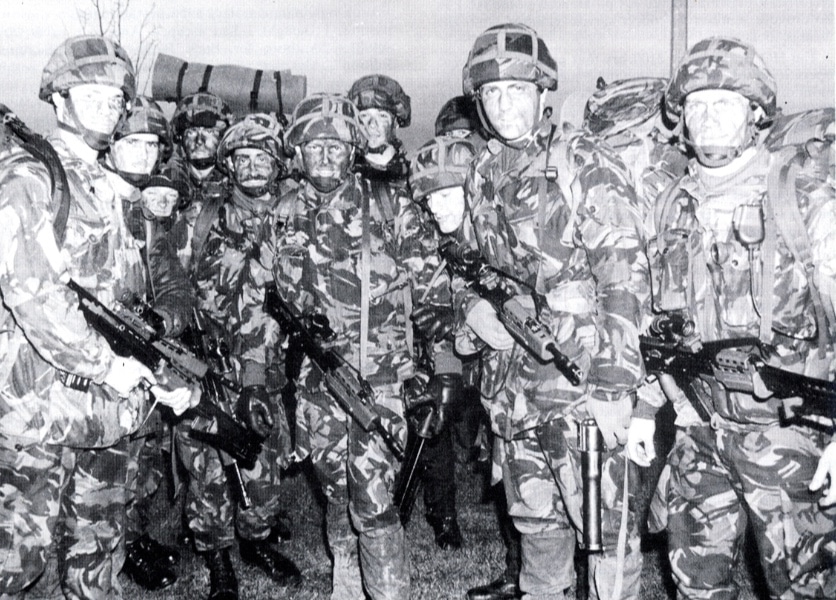
Berlin 1986 – 1988

Presentation of New Colours 1976
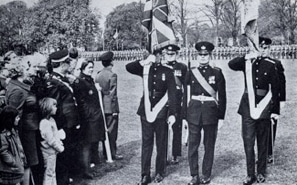
Withdrawal from Empire – Kenya

The Trials and Release of the P.O.Ws – Imjin River

The Battle of Imjin River

Amalgamation
The Badminton Blue Danube
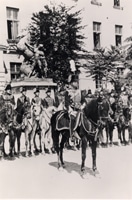
The End of the War in South-East Asia
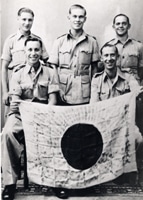
Holland & Germany
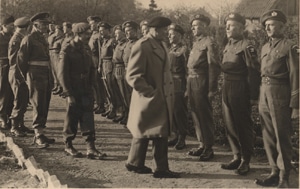
Invasion & Liberation
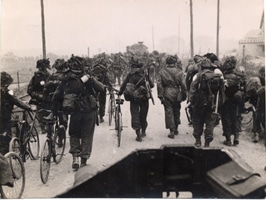
Front Line Frankie & Vinegar Joe
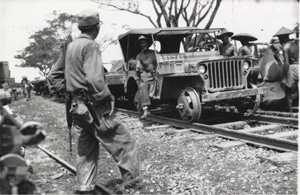
Rearguard in Burma
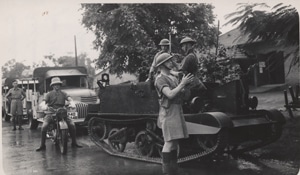
Operation Crusader
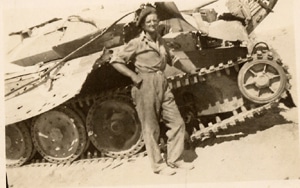
Cassel and Ledringhem
Egypt and Preparation for War
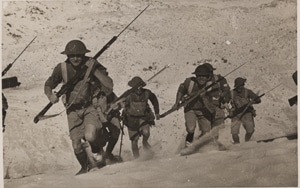
2nd Battalion in Shanghai

The Irish War of Independence

Salonika, Macedonia and Italy
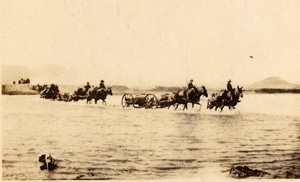
Kaiserschlacht and Victory
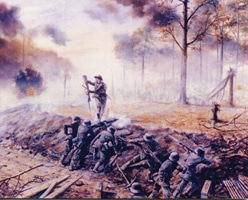
The Hindenburg Line & Third Ypres

The Gloucesters on the Somme
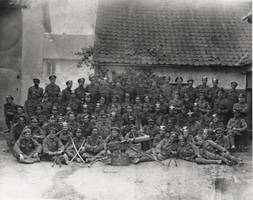
With the Yeomanry in Egypt
Mesopotamia and Palestine
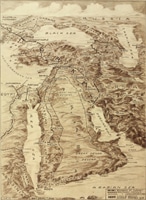
Gallipoli
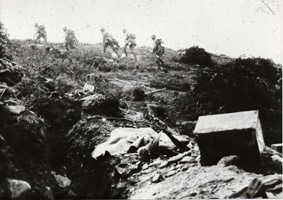
Outbreak of First World War

Reorganisation and Retraining

Regulars and Volunteers in the Boer War
The Siege of Ladysmith

The British Boers

Pax Britannica – 1st Battalion in Malta

Pax Britannica – 2nd Battalion in India

The Gloucestershire Regiment
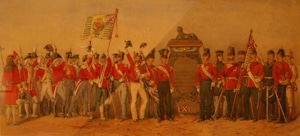
Pax Britannica – The 28th in Hong Kong

From Ireland to Canada with the 61st

The Siege of Delhi

Trench Warfare

Concerning Colours and Skirmishers…
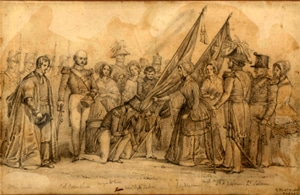
The Battle of Chillianwallah
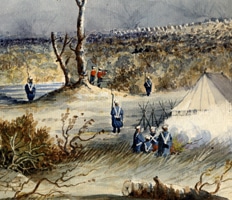
The 28th in Australia

The Yeomanry and the Bristol Riots

Quatre Bras and Waterloo

The Flowers of Toulouse

The Battle of Salamanca

Barrosa and Albuera

Walcheren, Oporto and Talavera

With Sir John Moore in Spain

The 61st at the Battle of Maida
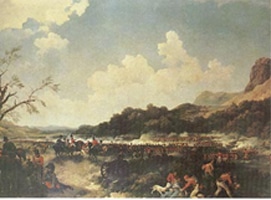
The Battle of Alexandria

South Africa and the Riflemen of the 61st
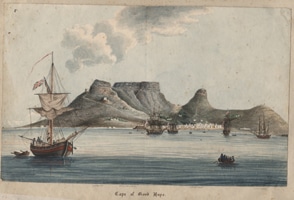
The Formation of the Cheltenham Troop

With The Grand Old Duke of York

North and South Gloucestershire
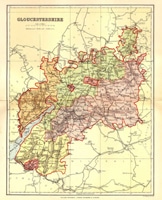
The Loss of Minorca
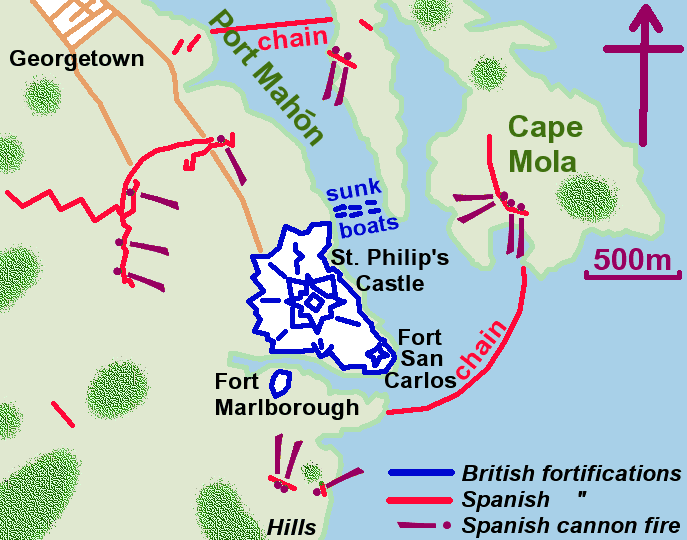
The Capture of St Lucia.
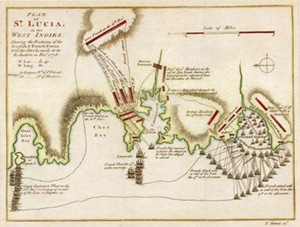
The Battle of White Plains

Inspections and Light Companies

The Incident of Walker’s Ear

The Heights of Abraham

The Capture of Guadeloupe
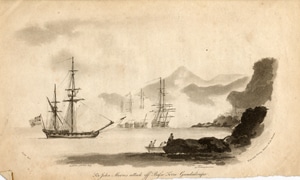
“Form! form! Riflemen form!”

The Creation of the 61st Regiment of Foot

Fontenoy and Lord George Sackville

The 28th Regiment of Foot in Flanders
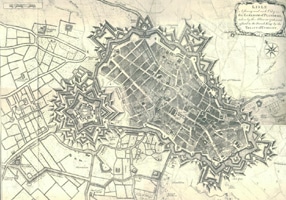
Bragg’s Regiment and the 28th Foot

Appointment of a New Colonel

The men are very good…

The Raid on Vigo

Defeat at the Battle of Almanza
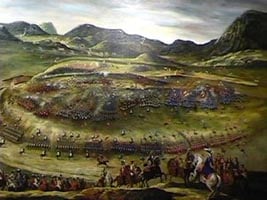
Annus Mirabilis

Forcing the Lines of Brabant

Disbandment, Survival and Resurrection
The Newfoundland Expedition

John Gibson Beats The Drum


